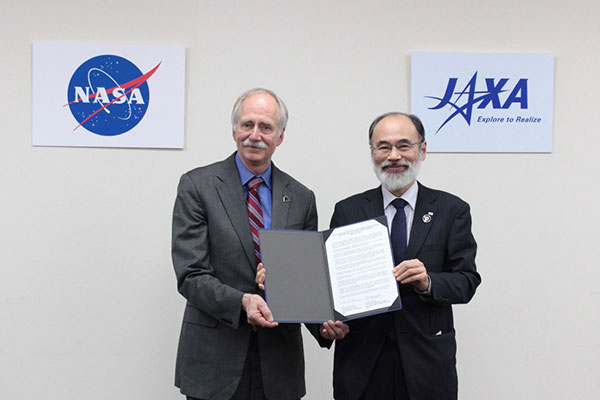
Japan Aerospace Exploration Agency (JAXA) and the National Aeronautics and Space Administration (NASA) signed a joined statement on January 24, 2018, affirming mutual interest in continued future cooperation in space exploration.
Japan and the US announced their partnership for the development of a space station named deep space gateway in the cis-lunar orbit during the Japan-U.S. Summit Meeting of November 2017.
Both countries have a long history of partnership in various areas including human exploration, Earth and space science and fundamental aeronautics through their International Space Station (ISS) programs.
They plan to expand their partnerships through missions to expand human presence deeper into the solar system. The countries will work together to extend human presence in orbiting platforms that developed in the moon's orbit. This mission will help in human expansion to Moon and Mars.
Japan Prime Minister Shinzo Abe and U.S. President Donald J. Trump had recognized the shared objectives and cooperation of the countries in the ISS and planned for long-term exploration vision for expanding human presence deeper into the solar system.
Human presence in lunar orbit was regarded as a supportive ground for future missions to Mars. The countries are studying the concept and technical feasibility of the deep space gateway along with other partners of the ISS.
The deep space gateway is planned to be developed by 2020. Russia, another major partner of ISS has also announced its support to the lunar space station.
The new cis-lunar space station is all set to be developed as a flexible and sustainable deep space infrastructure to support future human and robotic missions. The mission will also seek partnerships with other international partners.
NASA has developed powerful Space Launch System and Orion spacecraft for the mission. Other aerospace companies like SpaceX, Lockheed Martin, and Boeing are also developing their own launch technologies and spacecraft for missions to space, moon, and mars.
Orion spacecraft of NASA is developed along with Lockheed Martin. Meanwhile, SpaceX Dragon spacecraft is currently supplying cargo to the ISS and would carry astronauts to the space station and back this year.
The Orion spacecraft is being rigorously tested for sending unmanned moon mission by 2019. The spacecraft would make its voyage to mars by 2030.
SpaceX Company has announced to send its first unmanned mission to mars by 2022 while the first crewed mission will be launched by 2024.









